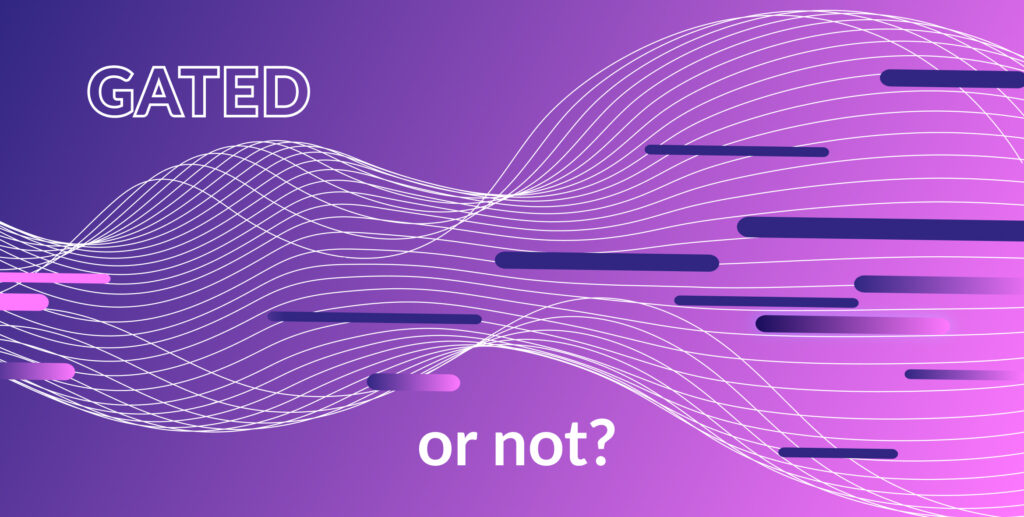In the competitive world of B2B tech marketing, it’s not news that creating high-quality content that engages your target audience is critical to your success. Our recent report found that B2B decision-makers consume an average of 4.5 pieces of content before contacting a supplier, so this reality isn’t likely to change. By creating valuable, informative content addressing customers’ needs and pain points, B2B companies can establish themselves as thought leaders, ultimately improving conversions.
But this is easier said than done – with so many different types of content available, it can be overwhelming to know where to start. So, what content do tech marketers need to produce to maximize their ROI this year
1. Blog articles
Blogs are number one for a reason. They’re not only great for SEO; they are also still one of the most effective ways to showcase your expertise, provide value, and build a loyal audience. Even more, they’re likely the part of your website that gets updated the most regularly, so give them the importance they deserve in your content plan. If you’re not already doing so, including blog posts in your strategy, as a way to promote use cases and solutions relevant to your target audience’s pain points, could help you reach your marketing goals.
2. Webinars

Webinars have exploded in popularity in recent years, due to the opportunity they bring to connect, educate and engage your audience in real time. So much so, that they are now the preferred type of content for 91% of B2B professionals.
When first organising a webinar, choose a relevant topic for your strategy, invite the right guest speakers to support your key messages, and above all, make sure that your audience knows it’s happening! And remember that follow-ups are just as important as promotions – engage with attendees to keep the conversation going, and use the insights obtained from your audience’s questions to inform your next move.
Not convinced about webinars still? Here are some stats from 2023 that prove you should do one.
3. Podcasts
Podcasts are also gaining traction amongst B2B audiences, and for good reason. They are convenient to consume, have many repurposing opportunities (from social media to video, or blogs), and bring companies closer to their customers (whilst reinforcing industry leadership positions).
When planning your podcast, consider how competitive the market is. While content needs to align with your marketing goals, adding diversity and depth is also important to not become just another podcast. We are, of course, not saying you have to create the top 1 podcast of the year, with millions of listeners – reaching and engaging your potential customers is enough!
4. Case studies
When done and used right, case studies are great marketing assets for tech B2B businesses. They are an opportunity to demonstrate how your product or service works in practice, and how it helps others achieve specific goals. This type of social proof can help you build trust and credibility with your prospects, but remember to keep it light and easy for them to consume. Consider using interactive formats or infographics, as presenting complex information in a visual and engaging way can help your audience understand it more clearly.
If you’re new to case studies, don’t miss our tips to create a tech B2B case study that works, template included.
5. Email marketing
The power of email marketing is one any B2B marketing team needs to embrace. It allows you instantly reach a wide audience with targeted messages, and through a channel that most of us use daily. It is also one of the most cost-effective channels; and with simple testing, automation, and analytics for ROI optimisation, it might become your B2B marketing strategy’s new best friend.

6. Social media content
Last but not least… we couldn’t leave out social media content. For B2B tech businesses, LinkedIn is the obvious platform to reinforce industry leadership and brand awareness, whilst engaging a wide audience. To make the most of it, consider creating a LinkedIn ambassador program, as a way to leverage employee advocacy to promote your content to the right audiences, and human-to-human.
But LinkedIn isn’t the only platform out there for B2B tech companies. Including less obvious channels in your strategy can be a way to reach prospects without any competitors battling for their attention. Using TikTok in B2B industries can help you reach a younger, tech-savvy audience when they’re most willing to listen. And, as the amount of TikTok users continues to grow, it’s only a matter of time before your competitors start creating short-form video content – will you get in early or wait until you’ve no other choice?
To wrap up…
By using a mix of these six types of marketing assets, you can create a content plan that educates, engages, and converts your target audience. It is important to be creative with the formats, but remember to also track and optimize your activity, regardless of the type of content you end up including in your strategy. And if you need help creating a content strategy that works, please get in touch at hello@isolinecomms.com.



